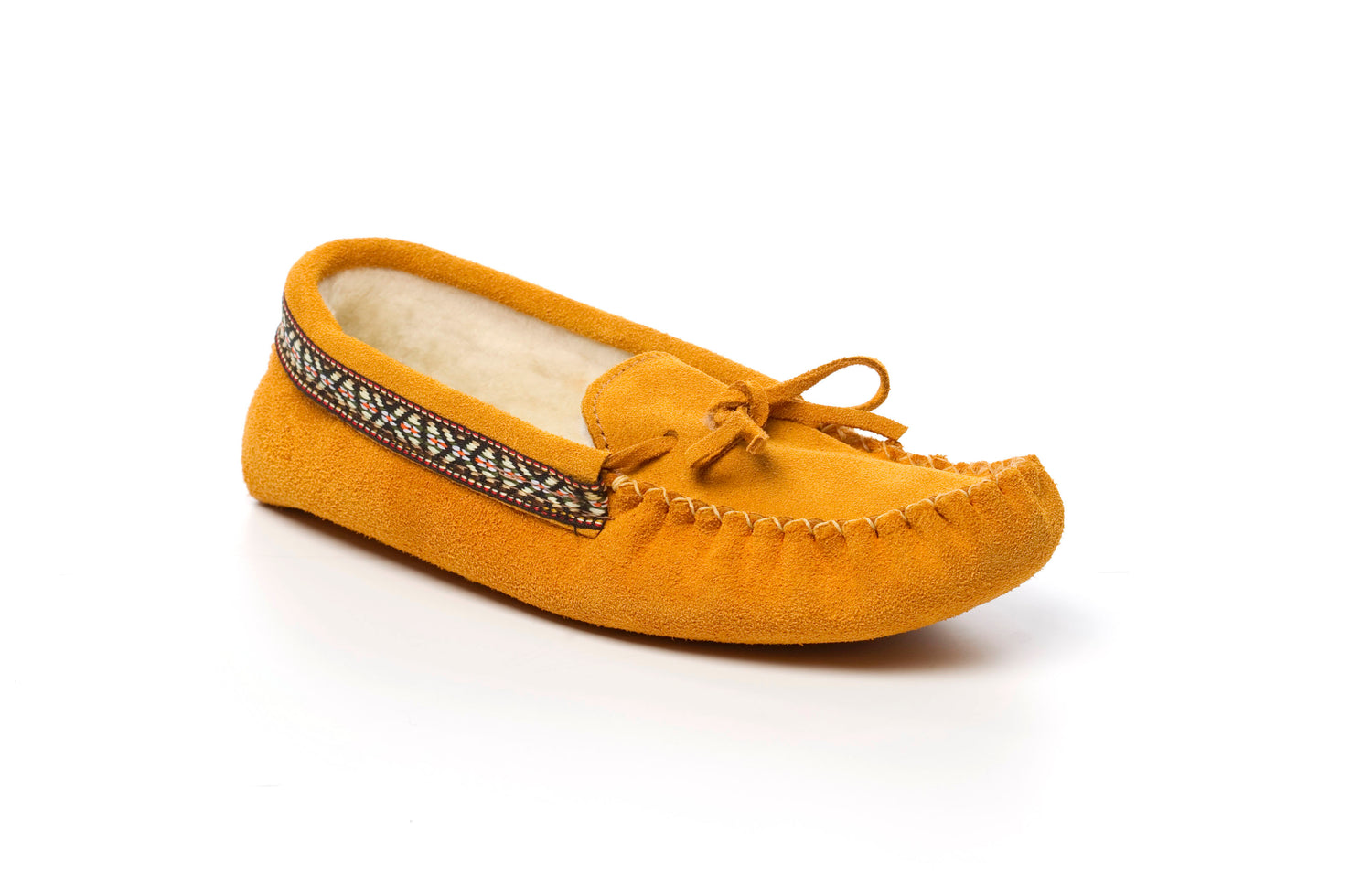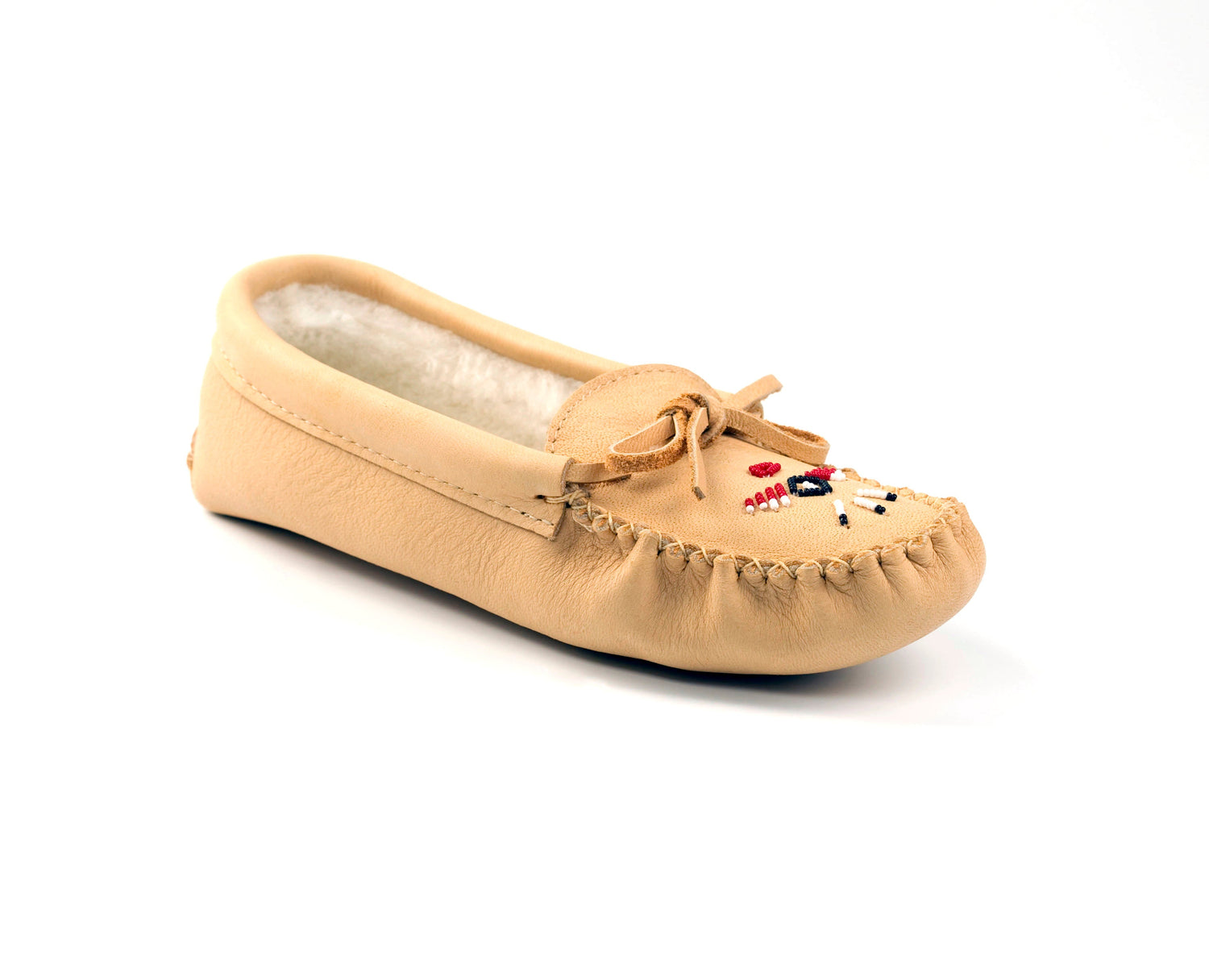
From Forest Paths to Fashion Statements: The Enduring Legacy of Moccasins in Canadian Heritage
Share
Canada's story is deeply intertwined with its vast wilderness and the intrepid spirit of those who navigated it. At the heart of this narrative lies the fur trade, a pivotal period that shaped the nation, and in which one humble piece of footwear played an indispensable role: the moccasin. More than just a shoe, the moccasin became a symbol of adaptation, a testament to Indigenous ingenuity, and a cornerstone of early Canadian industry.
The Dawn of the Fur Trade: Moccasins as Essential Gear
When European fur traders, or voyageurs, first arrived in what is now Canada, they quickly realized their heavy, clunky European footwear was entirely unsuited for the rugged terrain, deep snows, and silent forests. They soon adopted the superior footwear of the Indigenous peoples: the moccasin. The word "moccasin" itself is derived from Algonquian languages (like Ojibwe "makisin" or Cree "maskisin"), meaning "footwear."
These soft, flexible shoes, typically made from tanned animal hides like moose, deer, caribou, elk, or bison, offered unparalleled advantages. They allowed for silent movement through the woods, provided warmth in frigid temperatures, and were pliable enough to easily accommodate snowshoes or prevent damage to fragile birchbark canoes. For the voyageurs and fur traders, moccasins were not just comfortable; they were essential for survival and success in their demanding work.
A Thriving Indigenous Industry
The demand for furs fuelled a massive trading network, and Indigenous communities, particularly women, were at the forefront of the moccasin industry. They were renowned for their skill in preparing hides by cleaning, stretching, and drying them, often smoking the skins for added durability and a distinct finish. Using natural sinew as thread and bone awls for piercing, they meticulously handcrafted moccasins that were both practical and often beautifully adorned.
Moccasins became a significant trade item. Indigenous women would exchange their expertly crafted footwear for European goods like cloth, flour, tea, and later, glass beads and silk thread, which then inspired new decorative styles. This exchange highlights the crucial economic and cultural relationship between Indigenous peoples and European newcomers during the fur trade era.
What Kinds of Moccasins Would You Expect to See?
The beauty of moccasins in early Canada lay in their diversity, reflecting the varied landscapes and cultural traditions of different Indigenous nations:
-
Soft-Soled Moccasins: Predominantly found in the Eastern Woodlands and Subarctic regions, these were often made from a single piece of hide, gathered and sewn at the top of the foot. Their soft soles were ideal for walking on leaf-covered forest floors or fitting into snowshoes. Decoration often included intricate porcupine quillwork, natural pigments, and later, subtle beadwork and ribbon.
-
Hard-Soled Moccasins: As nomadic Plains tribes adopted the horse and travelled greater distances over rocky prairies, moccasins with stiff rawhide soles and soft uppers became more common. These offered greater protection against rough terrain. Plains moccasins were often heavily beaded on the vamp (the top part of the foot), with geometric patterns or, after European influence, increasingly elaborate floral designs using tiny glass beads.
-
Regional Variations: Each nation had its own distinctive styles, materials, and decorative techniques. For example, some Subarctic moccasins featured a semi-circular insert where the foot covering was gathered and sewn, while Woodland nations often had a center seam construction. High-cut designs, often wrapping around the ankle with ties, were common in colder climates to keep out snow, while others were ankle-length.
-
Practicality and Artistry: While fundamentally practical, moccasins were also canvases for artistic expression. Designs often reflected the maker or wearer's heritage, community, and personal history. The introduction of European materials like glass beads, silk thread, and fine needles in the 19th century led to an explosion of new designs, with floral patterns becoming particularly popular among Métis and Eastern Woodlands communities, earning the Métis the nickname "Flower Beadwork People."
A Living Heritage Today
The legacy of these early days continues to thrive. Today, Canadian companies and Indigenous artisans carry on the tradition of moccasin making, preserving ancient techniques while incorporating modern comfort. When you slip on a pair of Canadian-made moccasins, you're not just wearing comfortable footwear; you're connecting with centuries of Canadian heritage, a story of resilience, adaptation, and the enduring artistry of Indigenous cultures.
Explore our collection at https://sheepskinandthings.com/ and feel the connection to this rich history with every step.



